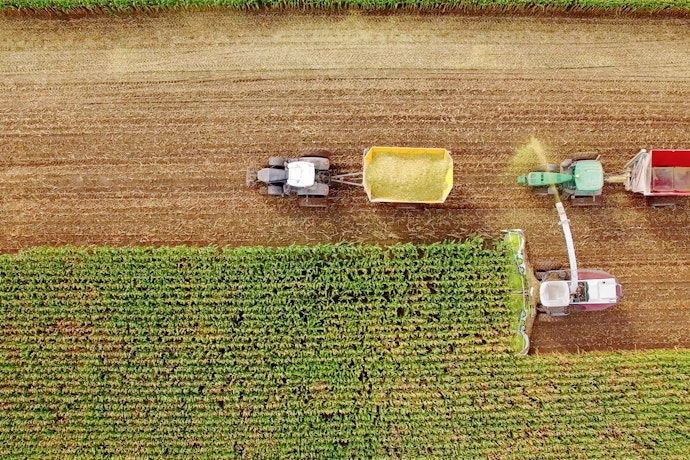Improving Your Construction Fleet Management Process with...
Construction companies, equipment leasing firms and equipment manufacturers can also benefit from installing GPS devices...
Read more
August 7, 2019
The agriculture and farming industry is an early adopter of technology and fleet tracking tools. Plows, tractors, combines and more were actually the start of smart agriculture—and today, the U.S. agricultural industry continues to take advantage of new technology such as telematics to better their businesses.
“Smart agriculture” refers to technologies designed to improve efficiency as the demand to produce greater yields using fewer resources continues to grow. Let’s explore three fundamental ways that those in the agriculture and farming industry can put technology to work for their business.
The vast amount of remote land used in farming and agriculture makes it difficult for farm managers to keep track of all farm vehicles, assets and field workers at once. Lost assets come at a huge cost to an industry that already faces volatile conditions and risk beyond human control. Additionally, variables in the weather, government regulations, state/federal economies and other factors can spell success or failure in agriculture. But with smart agriculture, farmers are taking control of their businesses, and GPS tracking is one tool that empowers them to make a difference.
GPS tracking devices and fleet management solutions make it easy to identify where vehicles are left at the end of a work shift and keep track of all of their locations while in use. This insight into where a vehicle is at all times is essential to protecting it—as not knowing where an asset is puts it at risk for theft or damage.
Prevent these hazards using near real-time notifications that alert you to the movement of any vehicles, enabling you to contact the authorities immediately to help avoid theft or total loss. Likewise, if a major storm is going to pass through part of your land, you can check to see if any of your assets are in harm's way and move them before they are damaged.
GPS tracking systems also give fleet managers analytics data to assist in maintaining their connected farm equipment, from fitting maintenance schedules into the calendar to helping reduce wasteful engine idling.
Telematics is more than just asset and vehicle tracking. This technology gives you visibility into where your field workers are at all times so that you can use this data to improve decision making and communication throughout your operations.
Geofences create virtual boundaries around key locations. They can be used to keep things in (i.e. to know if a vehicle or piece of equipment is removed from your land) or to keep things out (i.e. to alert you of a restricted area that vehicles need to avoid).
In agriculture, geofences also help to identify areas that need to be avoided by vehicle use or areas that require tending. You can also use geofencing to:
With the vast amount of land that needs to be tended, agriculture and farming managers are hard-pressed to always be efficient, meaning drivers and operators must always know the right route to take. GPS tracking for farming equipment helps to eliminate this guesswork when it comes to navigation.
You can use GPS tracking solutions to keep records of land that has already been addressed so your field service workers don’t go out of their way unnecessarily. Improved routes can help you reduce non-productive labor, lower fuel consumption and costs, and can ultimately reduce vehicle wear and tear to extend the life of expensive equipment.
The future of technology in farming and agriculture is now
Plows, tractors, and combines were once considered the ultimate technology in farming and agriculture - and those tools still have a tremendous impact on the way farming is done today. According to the United States Department of Agriculture, “...even as the amount of land and labor used in farming declined, total farm output more than doubled between 1948 and 2015.”
Thanks to today’s technologies, farm owners and operators can produce even greater output without necessarily increasing effort. And that benefits the well-being of people everywhere. “Farmers globally must increase food production 70% compared to 2007 levels to meet the needs of the larger population, according to a report from the Food and Agriculture Organization of the United Nations.” More than doubling food production over the next decade and beyond will be no easy feat, but technology will certainly play a huge role in making it possible.
GPS tracking, improved routes, near real-time monitoring of field service workers and much more are shaping the future outlook of the agriculture industry. With the increasingly technological world we live in, the possibilities are endless for what will come next for agriculture and farming.
Contact Verizon Connect to learn more about how our fleet management systems can help improve your agricultural and farming business.
Tags: Productivity & Efficiency, Vehicle & asset security, Vehicle Maintenance




Find out how our platform gives you the visibility you need to get more done.
Construction companies, equipment leasing firms and equipment manufacturers can also benefit from installing GPS devices...
Read moreBenefits of Asset Tracking Software
Read moreGet a jumpstart on choosing an asset management solution with this buyers guide. It includes questions to consider, attributes...
Read more